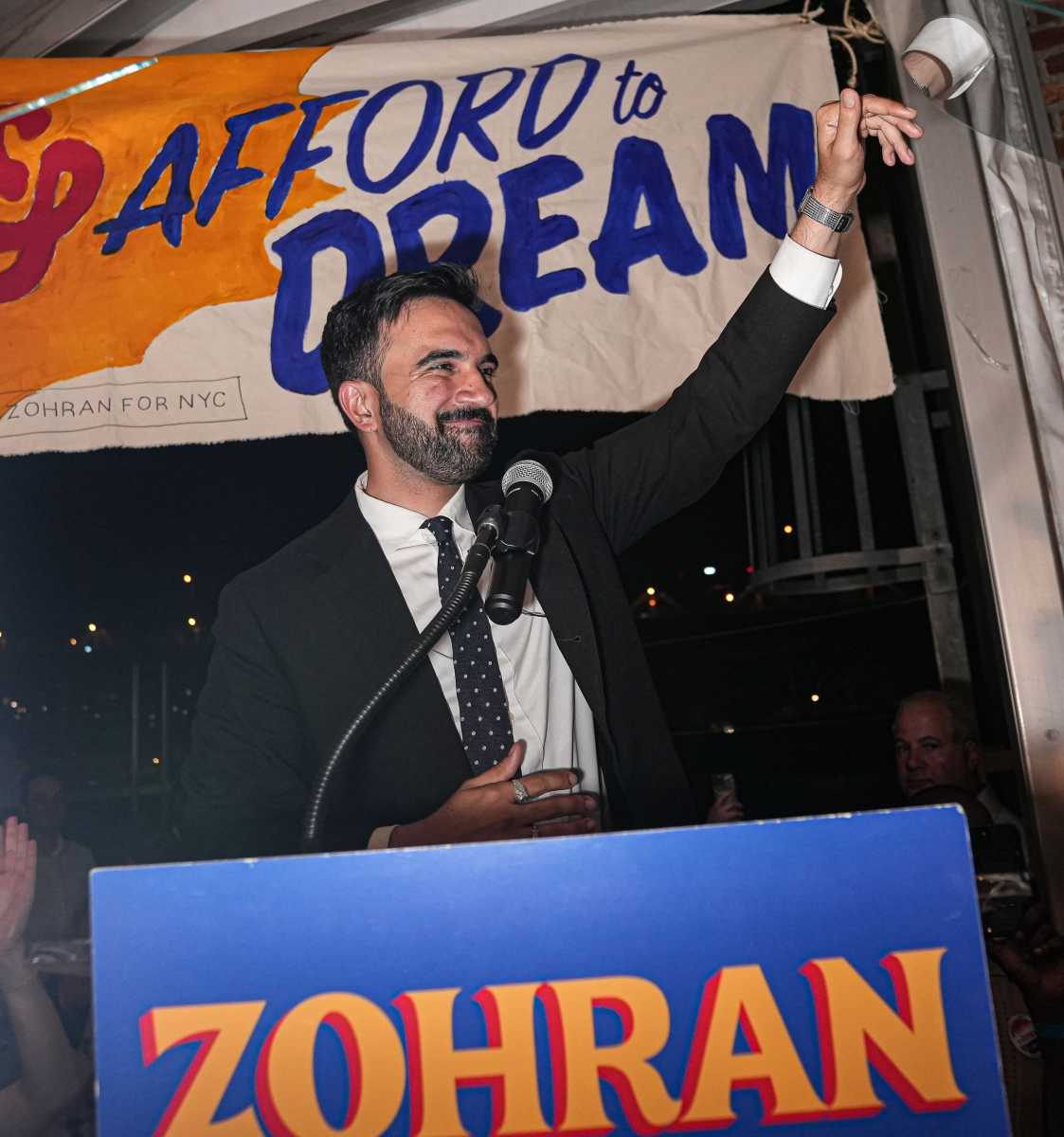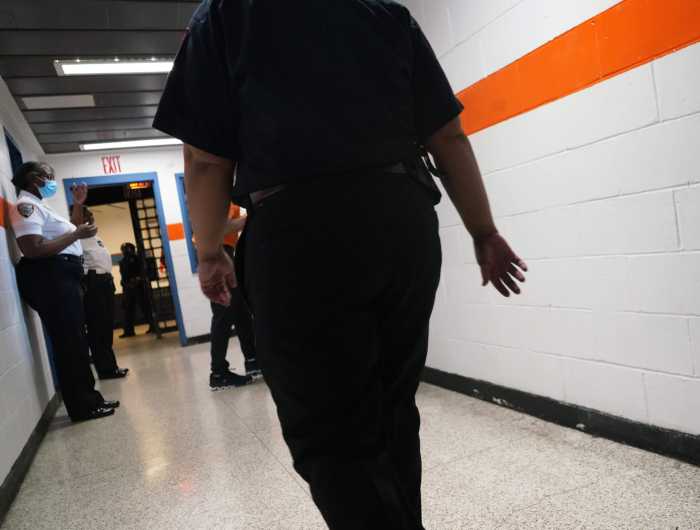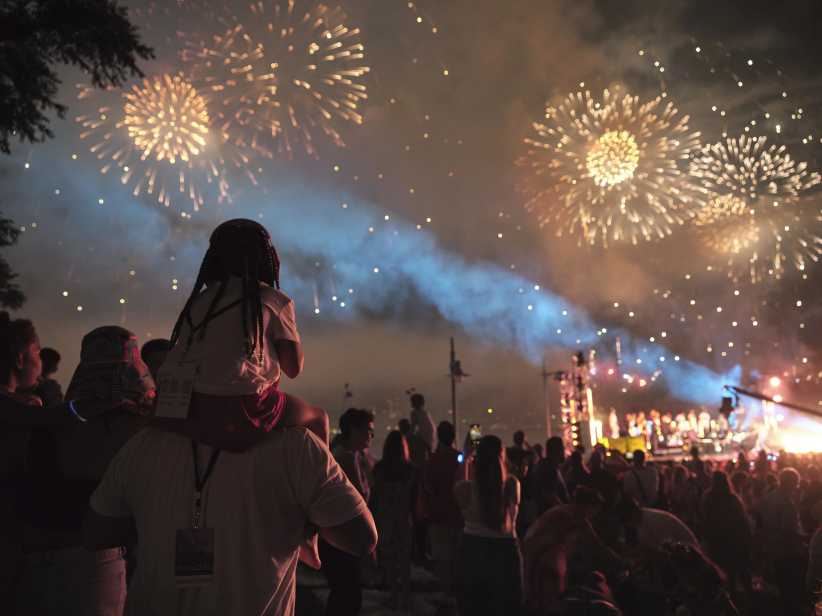It was around 4 a.m. on Saturday, November 25, 2006 when Sean Bell wrapped up his bachelor party at a Jamaica strip club just hours before he would exchange wedding vows with his high school sweetheart and mother of his two children.
What the 23-year-old Far Rockaway resident and accomplished high school baseball player could not have known when he left the Kalua Cabaret, located at 143-08 94th Avenue, was that instead of celebrating his last few moments as a single man, he had just been celebrating the last few moments of his life.
While Bell and his friends were enjoying the party, the New York Police Department (NYPD) was conducting a sting at the club, at which there had been reports of prostitution, drugs and weapons violations.
The sequence of events that followed is unclear but culminated in undercover detective Gescard F. Isnora observing a group of eight men including Bell and his two friends, Trent Benefield, 23 and Joseph Guzman, 31, leave the club and begin arguing with another man outside.
Guzman was allegedly overheard by Isnora as saying, “Yo, get my gun,” leading the detective to believe he was armed.
The police said that the men split into two groups of four. Bell, Benefield, Guzman, and an alleged fourth person got into Bell’s silver Nissan Altima parked on Liverpool Street, but following the shooting, evidence of a fourth person never surfaced.
Isnora, who had been following Bell’s group on foot, said that when he saw Guzman reach toward his waistband, he thought the man was reaching for a gun. It was at that point that Isnora alleges he pulled out his police shield and gun and identified himself as an officer.
Isnora fired the first round in the subsequent storm of bullets that followed when Bell drove toward him, clipping the detective in the leg before striking a minivan carrying Detective Michael Oliver, 35 and Police Officer Michael Carey, 26. Isnora has said he began shooting because he believed his life was in imminent danger as Bell next reversed his car to jump the sidewalk before switching gears and hitting the minivan again.
Oliver and Carey fired on the Altima after Isnora started shooting and were joined by Detectives Marc Cooper, 39, and Paul Headley, 35, who were nearby in an unmarked car.
Benefield and Guzman have said that Isnora did not identify himself before he began shooting and that they believed they were being carjacked. They said that Bell, after seeing the gun, panicked and was trying to drive away from the scene as events unfolded.
By the time the shooting spree ended, police had fired 50 rounds at the three men. Bell was shot four times in the right arm and neck. The shot to his neck perforated his larynx, while another bullet perforated his liver and right lung - both rounds caused mortal wounds.
Bell was pronounced dead at Jamaica Hospital.
Guzman was struck 11 times and had 17 wounds. Following the shooting, he was listed in critical condition at Mary Immaculate Hospital.
Benefield, who was shot three times in the legs and buttock, was listed in stable condition at Mary Immaculate Hospital.
At La Bella Vita catering hall in Ozone Park where a reception for 200 was to have taken place, owner Tony Modica instead relayed the terrible news to guests who called seeking directions to the wedding.
Sunday, November 26
Bishop Lester Williams, pastor of the Community Church of Christ at 108th Avenue and 167th Street in Jamaica, who was to have married Bell and 22-year-old Nicole Paultre at 5 p.m. the prior evening, instead leads a service to mourn Bell’s passing.
As Bell’s family and friends grieve, Detectives Oliver, Isnora, Cooper and Headley and Officer Carey are placed on paid administrative leave and stripped of their guns. They fired 31, 11, four, one and three rounds respectively. Until then, none had ever fired a round in the line of duty.
Reverend Al Sharpton leads a rally of about 300 protestors outside Mary Immaculate Hospital. Some protestors call for the resignations of Police Commissioner Raymond W. Kelley and the five officers. On her way to Sharpton’s rally from the Williams church service, Paultre collapses in grief.
Following the rally, protestors march to the 103rd Precinct located at 168-02 91st Avenue to face police standing behind metal barricades. They later return to the hospital. Others hold a vigil outside Benefield’s 147th Street apartment building.
Monday, November 27
Mayor Michael R. Bloomberg holds a meeting at City Hall with leaders of the black community. There he speculates that the police used “excessive force” in the Bell shooting.
Joseph Guzman’s sister, Yolanda, 34, refuses to allow NYPD Internal Affairs investigators into her brother’s hospital room.
Nicole Paultre meets with District Attorney Richard A. Brown and tells him the police “murdered” Bell.
Tuesday, November 28
Bloomberg meets Bell’s parents, William and Valerie, and Paultre at the Community Church of Christ.
Afterwards he meets with 50 black community leaders at Thomasina’s Catering in St. Albans. At the subsequent news conference, Bloomberg acknowledges imperfect relations between the police and the community.
Community leaders such as Senator Malcolm A. Smith commend Bloomberg for acting swiftly.
Only Oliver declines to testify before the grand jury without immunity.
Wednesday, November 29
Reverends Jesse Jackson and Al Sharpton lead Bell’s relatives and community members during a visit to the shooting site where a makeshift memorial is in place.
Police investigating the Bell shooting arrest three men and one woman at 123-65 147th Street, seizing a loaded semiautomatic handgun and a bag of marijuana. The arrests are believed to be part of an effort to locate witnesses to the shooting as well as the alleged “fourth man.”
Thursday, November 30
Prosecutors question Carey, who fired three times.
Friday, December 1
Bishop Williams officiates at Bell’s funeral at the Community Church of Christ. Despite the pouring rain, the church fills to overflowing with loudspeakers broadcasting the service to mourners outside.
Saturday, December 2
Wearing her wedding ring, Nicole Paultre collapses in tears screaming “No. No. No” as Bell is buried in Nassau Knolls Cemetery in Port Washington, Long Island.
Members of the New Black Panther Party (NBPP) and the Bloods and Crips gangs march at the shooting site.
Sunday, December 3
Bell family attorney Norman Siegel, a prominent civil rights attorney, calls for an independent prosecutor to lead the investigation, saying the District Attorney works too closely with the NYPD to avoid conflicts of interest.
Monday, December 4
Prosecutors conduct hospital bedside interviews of Guzman and Benefield. Benefield is discharged the next day.
Thursday, December 7
Nicole Paultre legally changes her name to Nicole Paultre Bell.
Friday, December 8
Prosecutors receive a 43-page ballistics report on the shooting from the NYPD.
Saturday, December 9
Leading a rally of 200 protestors at the shooting site, Malik Zulu Shabazz, chair of NBPP, calls for a 50-day boycott of white-owned business to last through January 29. Shabazz leads the group down Jamaica Avenue to confront shoppers.
The National Association for the Advancement of Colored People (NAACP) holds a protest march beginning at Jamaica Avenue and 168th Street traveling toward the NBPP rally. Hundreds gather, including some of Bell’s relatives.
Monday, December 11
Before 100 community and clergy leaders, Congressmember Gregory W. Meeks calls for the dismissal of Assistant Chief Anthony J. Izzo, who heads the NYPD’s Organized Crime Control Bureau and commands the undercover unit involved in the shooting.
Wednesday, December 27
Investigators interview Headley, who fired one shot. He agrees to answer questions without immunity.
Thursday, December 28
Trent Benefield is picked up by police during a Harlem gambling raid after they discover two warrants against him for trespassing and drinking an alcoholic beverage from an open container. Benefield, along with 35 others, receives a summons for loitering for the purposes of gambling.
Monday, January 1
Sean Bell’s mother, Valerie, announces 50-day vigil outside 103rd Precinct.
Tuesday, January 2
Prosecutors question Cooper, who shot four rounds.
Brown announces empanelment of grand jury.
Wednesday, January 3
Kelly announces that the independent, non-profit RAND Corporation—a policy research group—has been commissioned for a six-month study of the department’s firearms training and discharge review process.
Wednesday, January 10
Isnora, who shot 11 rounds, is questioned by prosecutors.
Wednesday, January 17
Prompted by concerns about police-community relations, Bloomberg announces an increase of $1.5 million to the Civilian Complaint Review Board’s existing $10 million budget.
Monday, January 22
The 23-member Queens grand jury begins hearing evidence to determine whether any of the five officers who opened fire on Bell’s car will face criminal charges.
Monday, January 29
Two guests at Bell’s bachelor party, Larenzo Kinred, 33, and Hugh Jensen, 30, testify to the grand jury that the police fired bullets in two bursts.
Monday, February 19
An estimated 300 people fill the Community Church of Christ sanctuary at a service to celebrate Sean Bell’s life and to mark the end of the 50-day vigil held in his honor.
Wednesday, February 28
Three guests at Bell’s bachelor party testify that they did not hear the officers identify themselves before they began shooting. One person is identified as Jean Nelson, whom police believe may be the “fourth man.” The others are not identified.
Friday, March 2
Benefield, Guzman and Paultre testify before the grand jury for a total of about four hours.
Monday, March 5
Headley and Carey voluntarily testify before the grand jury without immunity.
Wednesday, March 7
Isnora, whose first shot set off the subsequent explosion of bullets fired by police on the night of the Bell shooting, testifies before the grand jury to wearing his police badge around his neck, identifying himself as an officer, pulling out a gun and ordering the men in Bell’s car to show their hands on the night of the shooting. Isnora testifies that they did not show their hands and that Bell instead gunned the car forward and clipped him before hitting the unmarked minivan.
Detective Marc Cooper, 39, who fired four shots, testifies before the grand jury.
Friday, March 9
Detective Michael Oliver, who fired 31 of the 50 shots, testifies before the grand jury for about 2 and a half hours.
Wednesday, March 14
Adding a new twist to the Bell case, a Spanish-speaking “mystery witness,” whom police had questioned on the night of the shooting, goes to officers of the 115th Precinct in Jackson Heights and tells them he saw a man with a gun running from the scene.
The witness, who allegedly works near the Kalua Cabaret, originally told police he saw nothing. His new statements bolster the “fourth man” account put forth by police which prosecutors dismissed because no credible evidence of a non-police weapon at the scene was ever found.
The grand jury recalls a lab technician who had previously testified in the case. It is expected to be the last testimony of the case.
Before the new development, prosecutors had instructed the grand jury to consider charges of second-degree murder, manslaughter, or criminally negligent homicide in connection with Bell’s death and attempted murder, assault or reckless endangerment in connection with the wounding of Benefield and Guzman. They are charged with determining whether the police had reasonable justification to fire their guns that night.
Thursday, March 15
The “mystery witness” testifies to the grand jury that he saw a black male fire one or two shots at the police before running into a building, but that he had been scared to come forward earlier. The grand jury asks him no additional questions.
Friday, March 16
The grand jury finishes its deliberations. Although its decision will not be officially released by the district attorney’s office until Monday, March 19, news quickly spreads that the jury has returned three indictments in the case.
This article was compiled from The Queens Courier and other published reports.































